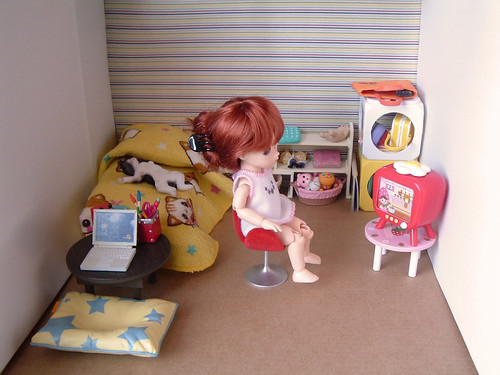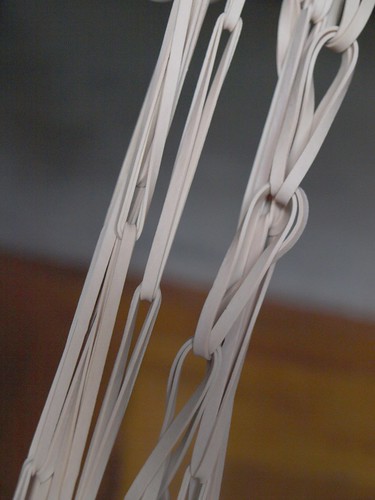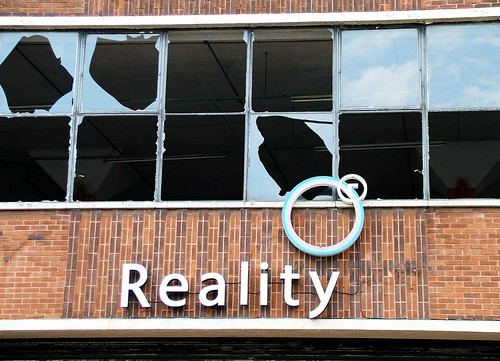
<Image http://www.flickr.com/photos/annetta/1954945479/ by Annetta)
(Another excerpt from my Digital Scholarship book):
In other posts I have looked at some of the impacts new technology has had in other industries and what we might learn from this in higher ed. While the lessons these sectors offer are instructive, it also provides a basis for considering in what ways higher education differs, and thus may not be subject to the same influences. The major difference is that higher education is not purely a content industry. I argued in this talk that HE produces a considerable amount of content, which could be distributed and shared digitally, but its revenue is not predicated on selling this content, unlike music or newspapers.
It is undoubtedly the case that the vast amount of online content means that people now conduct a lot of their learning informally, using free resources. Combined with financial pressures, this creates a pressure, or an alternative competition for learning that is new to higher education. Anya Kamenetz details the convergence of these two factors in her book DIY U, arguing that “Do-It-Yourself University means the expansion of education beyond classroom walls: free, open-source, vocational, experiential, and self-directed learning.” This certainly represents a challenge to the monopoly on learning that universities and colleges have held for centuries, and one they should take seriously (through, I would argue, engagement with the technology and approaches).
However, even in times of financial crisis higher education has a certain resilience for two reasons: the social value of formal education is often increased in times of financial hardship; learning is not a zero sum game. It is this latter reason that I think is of real long-term significance to higher education. Even if people are learning much of what they require via open, online resources mediated through their social network, that in itself can generate the desire for further learning, and itself foster interest in formal education. Competition with informal learning is true to an extent, but it presupposes a set amount of learning by an individual, as if they have a limited number of cognitive learning tokens to be used up in a lifetime. But it is more often the case that learning begets learning. In this respect open, informal education is complementary to formal education, indeed something of a gift, rather than a threat. In a world that generates vast amounts of niche content which people are increasingly engaged with, either by generating their own, sharing or discussing, then the outcome is a larger population of active learners.
The challenge for universities then is to remain relevant to these learners. This means developing an appropriate curriculum, having flexible course options, using technology effectively and generating interest. An example of this symbiotic relationship would be between a photo-sharing service such as Flickr and university courses on digital photography. A great deal of informal learning occurs through the communities on Flickr, which can focus around themes or techniques, or the Daily Shoot site which gives photographers a daily task to perform (http://dailyshoot.com/). At some stage though many photographers want to further their understanding, or have a more structured approach and sign up for a course on digital photography. The Open University’s short course in this area has been one of its most popular, which since 2007 has run two presentations a year of 1000-1500 students on each cohort.
More radically Jim Groom's open course on digital storytelling (http://ds106.us/), which combines 32 campus based student who are studying for credit, with learners from a global community studying for their own interest. The combination of the two groups is mutually beneficial. Participants are required to create digital artefacts and to share these on their own blogs and sites, which are aggregated together on this course blog. The course is fluid, with participants suggesting assignments, and distributed across many sites, using the hashtag #ds106 to group content.
These two examples demonstrate how the open, informal learning which many people partake in online is not necessarily a threat to the existence of higher education, and, given some adjustments by universities, can be a benefit.
There are two messages that higher education can take from this: the first is that it needs to engage in the sort of experimentation Jim's course represents if it is to turn the digital, networked and open approaches of learners to its advantage; the second is that it has the capacity to do so.
It is this second message that marks another difference with the sectors so often used as a comparison. Many of those industries did not have the revenue streams which come from accreditation and research funding to counter any loss of revenue from consumers finding alternative content freely available online. Higher education is in a position where not only does it need to disrupt its own practice, but it can afford to. It has sufficient resilience to do so because unlike content industries, that disruption does not completely undermine its current model. Higher education can be viewed as a long tail content production system, and with little effort much of what it produces could be shared as open, digital resources. Higher education can afford to do this, because their ‘customers’ (if we use that term by way of analogy with other sectors) are not purchasing that content directly – they are instead students who are paying for a learning experience which comprises that content along with the other elements, most notably support, guidance and accreditation. Other customers include research councils, commercial partners, media, charities and governmental agencies. Again these customers are not directly paying for content, and with the exception of cases of commercial sensitivity and privacy issues, they often have much to gain from openness and wide dissemination.
Some of the concerns relating to the impact of new technologies in other sectors then do not apply in scholarship, or their impact is reduced. The concerns regarding how artistic endeavour is to be rewarded in a world where all content can be easily distributed for free are very real if you are a musician, for example. These concerns are not the same for academics however, who are usually employed and so are not deriving their income from content in the same manner. This is not to underestimate the impact and challenges that face higher education, but to highlight that disruption by new technologically driven approaches is not as threatening to core practice as it has been in other sectors. This may account for why the innovation and adoption of such approaches has been less prevalent in higher education, since the urgency to respond is not as great.





